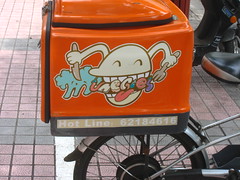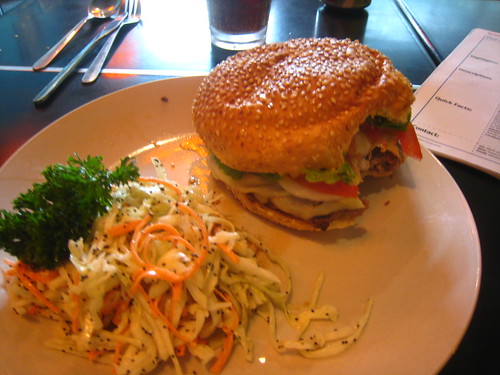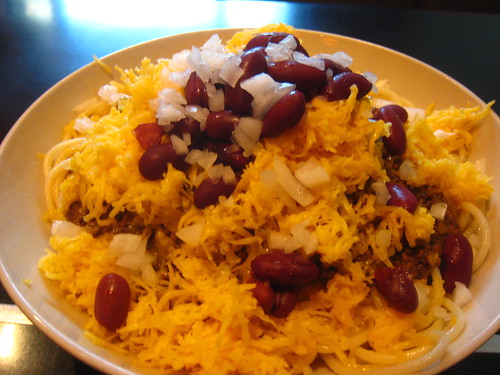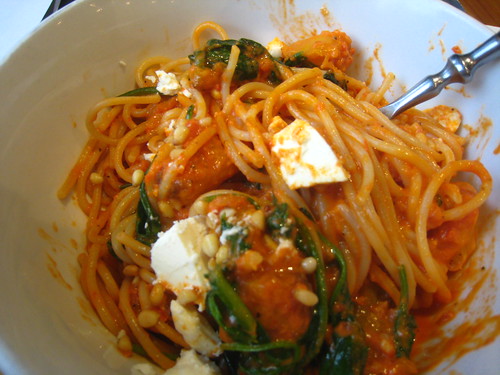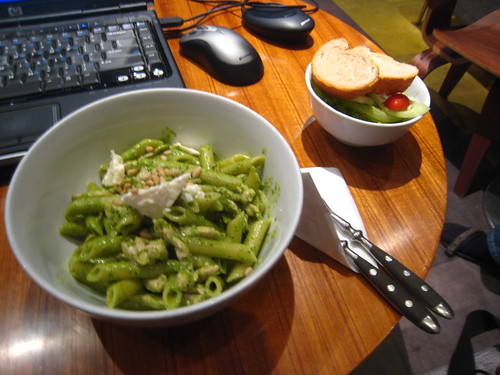 Far too long ago, I wrote an update about visiting the really-quite-impressive Buddha statues of Leshan and Jiajiang. Really, the Big Buddha of Leshan was the impetus for the trip - my sister was visiting China, saw a picture of the Buddha, and knew she wanted to see that. However I was also happy to have a look at Sichuan while there - I have a lot of friends from Chengdu and Sichuan, and they've really talked it up a lot, and Chengdu in particular has an excellent reputation.
Far too long ago, I wrote an update about visiting the really-quite-impressive Buddha statues of Leshan and Jiajiang. Really, the Big Buddha of Leshan was the impetus for the trip - my sister was visiting China, saw a picture of the Buddha, and knew she wanted to see that. However I was also happy to have a look at Sichuan while there - I have a lot of friends from Chengdu and Sichuan, and they've really talked it up a lot, and Chengdu in particular has an excellent reputation. I'll start with Emeishan, or Emei Mountain, which is one of the famous Buddhist Mountains of China, dotted with ancient temples, there's also tribes of monkeys to contend with. My sister, a former resident of India, was a lot less excited about that latter prospect than I was. But truth be told, I never even saw a monkey, I only heard them off in the distance. It's because I mostly ended up hiking around the lower reaches of the mountain, rather than doing the normal tourist thing and taking a two and a half hour trip to the top and then walking down. If it sounds like I missed out on scenic views, Sichuan's climate was pretty much on par for the course, and was too foggy to see all that much.
I'll start with Emeishan, or Emei Mountain, which is one of the famous Buddhist Mountains of China, dotted with ancient temples, there's also tribes of monkeys to contend with. My sister, a former resident of India, was a lot less excited about that latter prospect than I was. But truth be told, I never even saw a monkey, I only heard them off in the distance. It's because I mostly ended up hiking around the lower reaches of the mountain, rather than doing the normal tourist thing and taking a two and a half hour trip to the top and then walking down. If it sounds like I missed out on scenic views, Sichuan's climate was pretty much on par for the course, and was too foggy to see all that much.I almost planned for a multi-day hike and I'm glad I didn't. Generally the mountain views weren't much, and so for the most part what I saw was this:

It's a non-descript picture, but it was a non-descript environment, a whole lot of the trail looked like that. The main thing to notice is there's a whole bunch of concrete stairs going up and down, and most of the trail involved walking up and down concrete stairs, which really killed the legs. Hikes in China are all paved over like this, it's a lot less fun than being in California, where I got really into Bay Area Hiker last time I was around, and went on a number of amazing dirt paths through redwoods and so forth:

There were Buddhist temples, although they weren't of ancient construction and were of the cheesy tourist-oriented kind, something like smaller but better versions of Jing'an Temple. Many of them had restaurants serving simple Chinese-Buddhist-style (vegan) meals, I had one and it was pretty good. As corny as they could be, the temples were a colorful break from the hiking.

 I ended my short trip in Chengdu, the capital of Sichuan. It's famous for the spicy food and for the beautiful women. However, my sister's vegetarian and we didn't get the chance to try the normal local eating options, and we looked around and I swear the women didn't really look much different than in Shanghai. Later I heard that women there are considered more beautiful mainly because they're whiter.
I ended my short trip in Chengdu, the capital of Sichuan. It's famous for the spicy food and for the beautiful women. However, my sister's vegetarian and we didn't get the chance to try the normal local eating options, and we looked around and I swear the women didn't really look much different than in Shanghai. Later I heard that women there are considered more beautiful mainly because they're whiter. Perhaps my expectation were too high, but I just didn't think much of Chengdu. My favorite was Wenshu Temple, which had a lot of older locals just lazing about doing their thing. I also ran across a Tibetan area with a decent Tibetan restaurant. However for the most part it felt like a standard, poorly-constructed Chinese city, with the tourist sites being expensive and uninteresting. I'm told that it's a great city to live in and enjoy a laid-back atmosphere, but as a tourist just there for a couple days, I admit I didn't much care for it. Also, as a city of four million people without a subway or even elevated highways, the traffic at rush hour was about the worst I've ever seen in my life, and I've had a daily commute from Oakland to Palo Alto! I don't want to end on a sour note, so here's a picture of a nice old-style gateway:
Perhaps my expectation were too high, but I just didn't think much of Chengdu. My favorite was Wenshu Temple, which had a lot of older locals just lazing about doing their thing. I also ran across a Tibetan area with a decent Tibetan restaurant. However for the most part it felt like a standard, poorly-constructed Chinese city, with the tourist sites being expensive and uninteresting. I'm told that it's a great city to live in and enjoy a laid-back atmosphere, but as a tourist just there for a couple days, I admit I didn't much care for it. Also, as a city of four million people without a subway or even elevated highways, the traffic at rush hour was about the worst I've ever seen in my life, and I've had a daily commute from Oakland to Palo Alto! I don't want to end on a sour note, so here's a picture of a nice old-style gateway:

